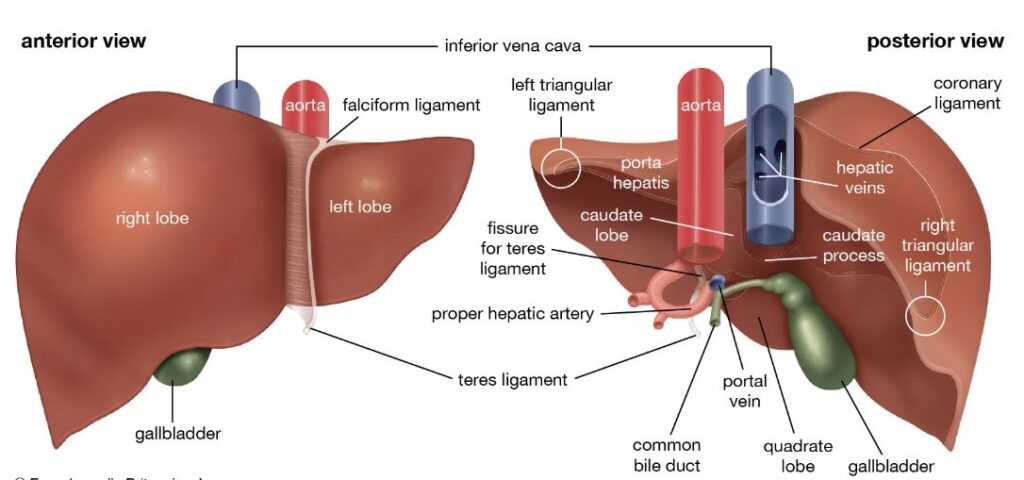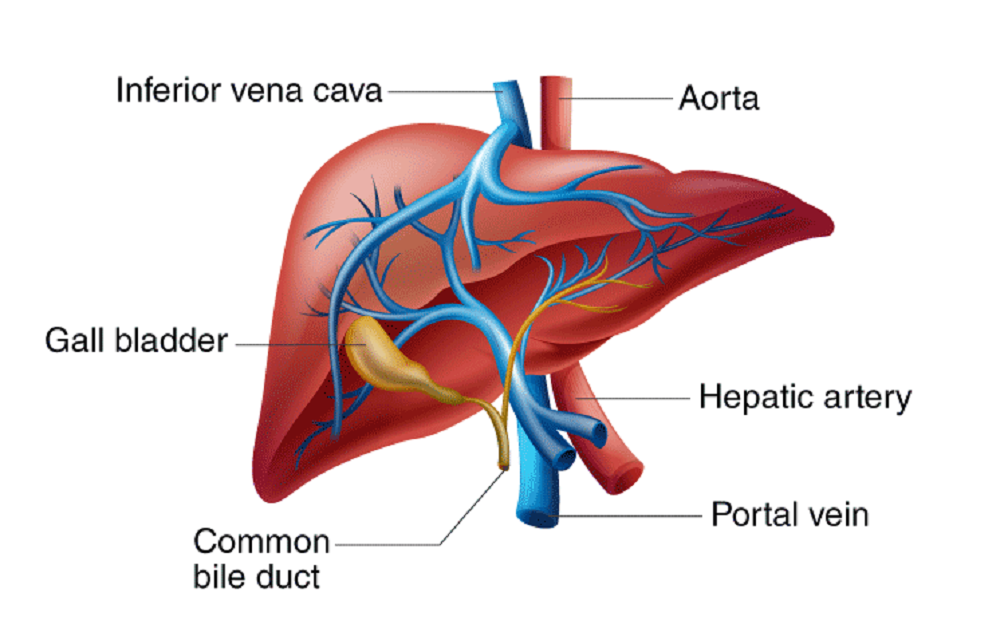The liver is the largest gland in the human body. It is situated in the upper part of the abdominal cavity occupying the greater part of the right hypochondriac region, part of the epigastric region and extending into the left hypochondriac region. It secretes bile and performs various other metabolic functions. It weighs about 1600 gm in male and about 1300 gm in females.
It has five surfaces :
- 1) Anterior surface
- 2) Posterior surface
- 3) Superior surface
- 4) Inferior surface
- 5) Right surface
It has four lobes :
- 1) Right lobe
- 2) Left lobe
- 3) The caudate
- 4) Quadrate Lobe
The Right lobe :
The right lobe is much larger than the left lobe and forms five sixths of the liver. It contributes to all the five surfaces of the liver and presents the caudate and quadrate lobes.
The left lobe :
The left lobe of the liver is much smaller than the right love and forms only one sixth of the liver. It is flattened from above downwards.

Organs associated with the liver :
Superiorly and anteriorly : Diaphragm and anterior abdominal wall.
Inferiorly : Stomach, bile ducts, duodenum, hepatic flexure of the colon.
Posteriorly : Oesophagus, inferior venacava, aorta, gallbladder, Vertebral column and diaphragm.
Laterally : Lower ribs and diaphragm.
It was four borders:
- 1) Superior border
- 2) Inferior border
- 3) Right border
- 4) Left border
